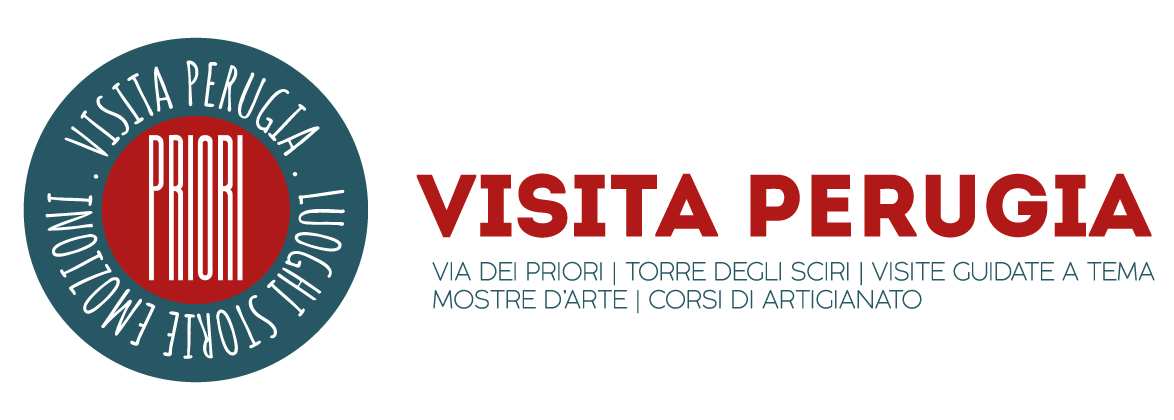Chiesa della Madonna della Luce
Narra Serafino Siepi, storico perugino, che il 12 settembre 1512 ‘avvenne che alcuni giovani artieri giocando a carte […], uno di essi proferì un’orrenda bestemmia e in quell’istante l’immagine sopradetta, che era di lì a poco lungi, chiuse prodigiosamente gli occhi e così li tenne per quattro giorni continui, dal 12 al 16 settembre. Immensa fu la moltitudine che la visitò […]’. Il 17 aprile 1513 dal mezzo della via ove stava l’immagine fu quivi trasferita, cangiatone il nome di Madonna di San Luca in Madonna della Luce in memoria del prodigio. Si costruisce per volontà di popolo un piccolo aggraziato tempio in fondo a Via dei Priori, a fianco di Porta Trasimena, con il grifo, emblema di Perugia, scolpito nei pilastri angolari a ricordare il contributo finanziario del Comune. L’ornamento della piccola cupola viene affidato nel 1532 a Giovan Battista Caporali.
Chiesa di San Luca
La Chiesa della Commenda di San Luca Evangelista a Perugia è uno dei simboli meglio conservati della presenza degli Ospitalieri di San Giovanni del Sovrano Militare Ordine di Malta. La chiesa, e il complesso ad essa annesso, sono adiacenti alla porta medioevale Trasimena chiamata anche Arco di San Luca o Porta Senese. L’edificio risale al XIII secolo e la sua storia è inizialmente legata all’Ordine dei Canonici Regolari del Santo Sepolcro documentati a Perugia fin dal 1145. Dopo la caduta di Acri, la sede nell’Ordine Sansepolcrino viene dapprima spostata a Cipro e poi, a partire dal 1320 circa, a Perugia. La casa madre viene posta proprio nella Chiesa di San Luca con l’annesso edificio commendatizio e diviene così la sede in Europa dell’Ordine del Santo Sepolcro. San Luca e le altre proprietà dell’Ordine del Santo Sepolcro vengono poi unite a quelle dell’Ordine Gerosolimitano di San Giovanni nel 1489 a seguito della bolla ‘Cum solerti meditatione’ che sopprime parzialmente l’Ordine del Santo Sepolcro decretandone il passaggio dei beni ai Giovanniti. Tale passaggio non è immediato né pacifico; sorgono anzi contrasti tra i due ordini tanto che nel 1491 è nominato priore Battista de Marinis di Genova con il compito di mediare e smorzare le tensioni. Dai documenti risulta che i Canonici del Santo Sepolcro, agli inizi del XVI secolo, abitavano ancora il complesso di San Luca.
Church of Madonna della Luce
Serafino Siepi, a historian from Perugia, narrates that on September 12th, 1512, “while some young craftsmen were playing cards […], one of them uttered a horrendous blasphemy and in that instant the nearby image of the Madonna prodigiously closed her eyes and kept them closed for four continuous days, from the 12th to the 16th of September. It is said a multitude of people visited her […]”. On April 17th, 1513, the image of the Madonna was moved from where it stood in the middle of the street to this church, and the name of Madonna di San Luca was changed to Madonna della Luce in memory of this event. By will of the people, a small graceful temple was built at the end of Via dei Priori, next to Porta Trasimena, with the griffin, emblem of Perugia, carved into the corner pillars to commemorate the financial contribution of the Municipality. The decoration of the small dome was entrusted to Giovan Battista Caporali in 1532.
Church of San Luca
The Church of the Commenda of San Luca Evangelista in Perugia is one of the best-preserved symbols of the presence of the Hospitallers of San Giovanni of the Sovereign Military Order of Malta. The church, and its annexed complex, are adjacent to the medieval Trasimene city gate also called Arco di San Luca or Porta Senese. The building dates back to the 13th century and its history is initially linked to the Order of Regular Canons of the Holy Sepulcher documented in Perugia since 1145. After the fall of Acre, the seat of the Sansepolcrino Order was first moved to Cyprus and then, starting around 1320, in Perugia. The main headquarters was placed right in the Church of San Luca with the adjoining commendatory building and thus became the headquarters of the Order of the Holy Sepulcher in Europe. San Luca and the other properties of the Order of the Holy Sepulcher were then merged with those of the Order of St. John of Jerusalem in 1489 following the Papal bull ‘Cum solerti meditatione’ which partially suppressed the Order of the Holy Sepulcher, thus decreeing the transfer of its assets to the Giovanniti. This transition was neither immediate nor peaceful; on the contrary, contrasts arose between the two orders, so much so that in 1491 Battista de Marinis of Genoa was appointed prior with the task of mediating and de-escalating the tensions. Documents show that the Canons of the Holy Sepulcher still lived in the complex of San Luca at the beginning of the 16th century.

